Room 40 The Admiralty
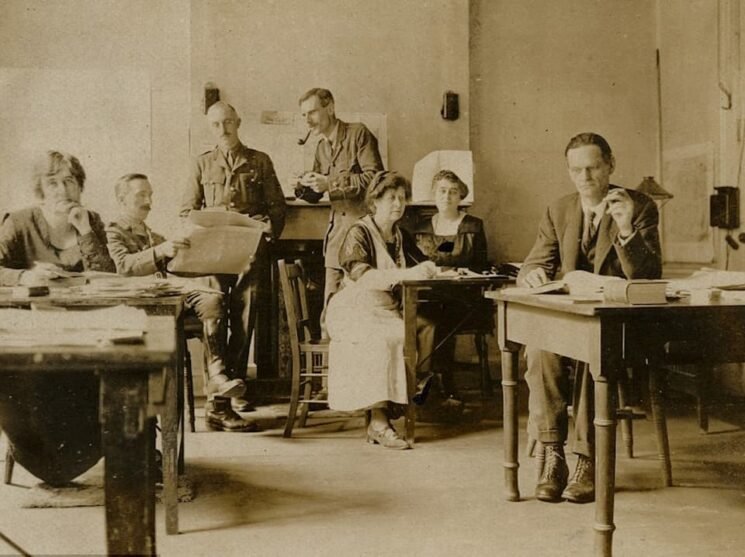
We may earn a small fee from the companies mentioned in this post.
How codebreakers in Britain’s crack Room 40 team brought the US into the First World War
In the annals of war, victories are often attributed to gallant soldiers on battlefields, strategic generals, and game-changing technology. But beneath the surface, there are myriad unseen factors that influence the course of a conflict.
One such factor that played a crucial role during the First World War was the science and art of codebreaking. Unbeknownst to many, a secretive unit within the Royal Navy created Room 40 The Admiralty, or simply known as Room 40, where a secret team were tasked with deciphering encrypted messages, thereby shaping pivotal events of the Great War.
This blog will delve into the intriguing world of Room 40 the admiralty and its instrumental role in the First World War. We will explore its origins, the ingenious individuals behind its operations, and the impact of their work on the war’s outcome.
By decrypting German ciphers and intercepting pivotal communications like the infamous Zimmermann Telegram, the personnel of Room 40 the Admiralty tipped the scales in favour of the Allied forces, altering the course of history. Their efforts in decoding both naval and diplomatic communications were crucial in shaping military strategies. Join us as we navigate this fascinating journey into the clandestine world of wartime codebreaking.
The Birth of Room 40 The Admiralty: A Response to an Urgent Need
As the First World War raged on, the necessity for effective intelligence became starkly apparent. The rapid technological advancements of the era had birthed a new domain of warfare – wireless communication, which was extensively used by the German Navy.
To gain an upper hand, the Allies needed to infiltrate this unseen battlefield, and thus, the idea for Room 40 The Admiralty was conceived.
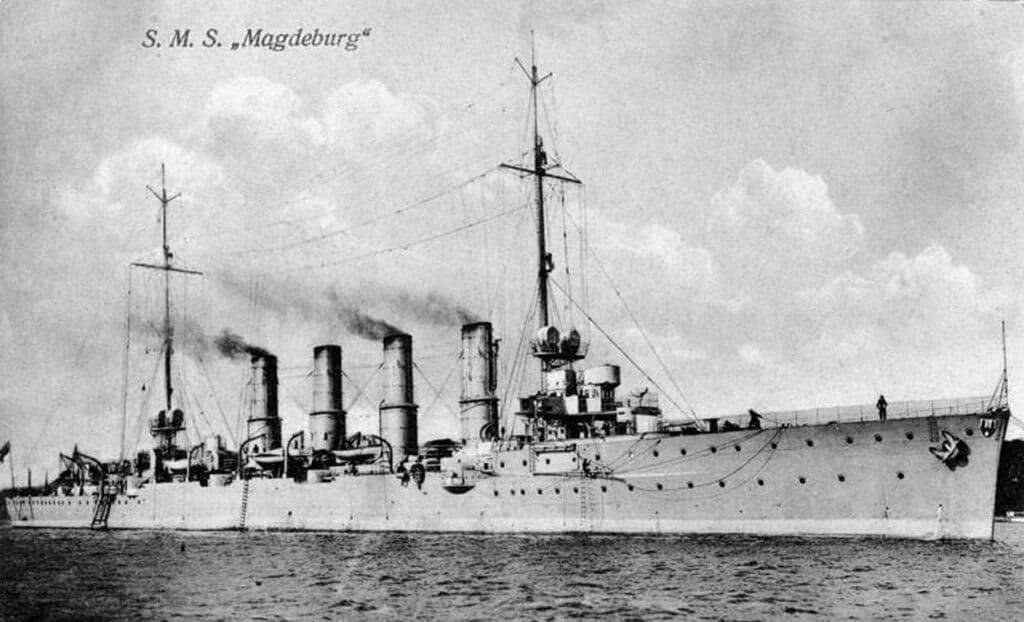
S.M.S Magdeburg
The initial spark for Room 40 The Admiralty ignited quite unexpectedly. On the eve of the war in August 1914, three German naval codebooks were recovered. The first, the Signalbuch der Kaiserlichen Marine (SKM), was found on board a sunken German cruiser, the SMS Magdeburg, by Russian forces who shared it with their British allies.
The other two codebooks were captured by the Royal Navy from the German vessels, the SMS Hobart and the SMS Markgraf. These books contained the keys to the German naval codes, becoming the foundation upon which Room 40 The Admiralty was established. Additionally, a British trawler played a crucial role in acquiring important German naval codebooks, further aiding Britain’s cryptanalysis efforts.
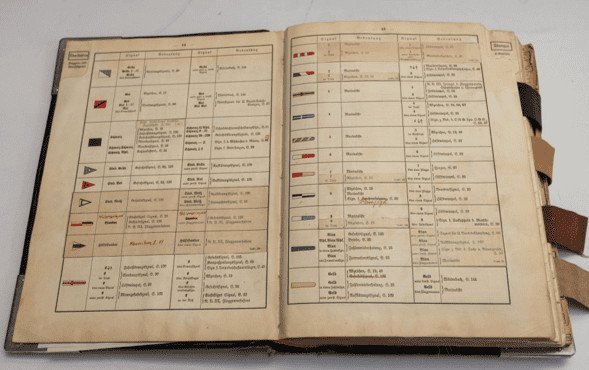
The Signalbuch der Kaiserlichen Marine (SKM) – German Navy Codebook
Room 40 The Admiralty was covertly set up within the Old Admiralty Building in London, named simply after the room’s designation within the office. It was staffed by an unassuming mix of individuals whose expertise ranged from naval officers, academics, linguists, and even classicists, few of whom had any previous experience with codes and ciphers.
Among the early personnel, the noteworthy figures included Alastair Denniston, a language teacher and Classics scholar who would later go on to head the Government Code and Cypher School, and Captain Reginald ‘Blinker’ Hall, the Director of Naval Intelligence. Hall was a brilliant strategist with a talent for understanding the broader implications of the raw intelligence Room 40 produced.
These codebreakers worked tirelessly to crack the complex German ciphers, providing the British Admiralty with priceless information about German naval movements and intentions. With this strategic advantage, the British naval forces could anticipate and counter German operations effectively, significantly tilting the scale of naval warfare in their favour.
Hence, Room 40 The Admiralty was born out of the urgent need for actionable intelligence during the First World War. Its establishment marked a turning point in the war effort, setting a precedent for the crucial role that codebreaking would play in military strategy henceforth.
One of the most prominent triumphs of Room 40 The Admiralty, which had profound implications on the course of the First World War, was the interception and decryption of the Zimmermann Telegram. This section will take an in-depth look at the chain of events surrounding this crucial piece of intelligence.
In January 1917, the codebreakers of Room 40 intercepted a coded message from German Foreign Minister, Arthur Zimmermann (pictured below), to the German ambassador in Mexico. The message was encoded using a new version of the German diplomatic code, known as 13040, which was more complex than the ones Room 40 The Admiralty had previously cracked.
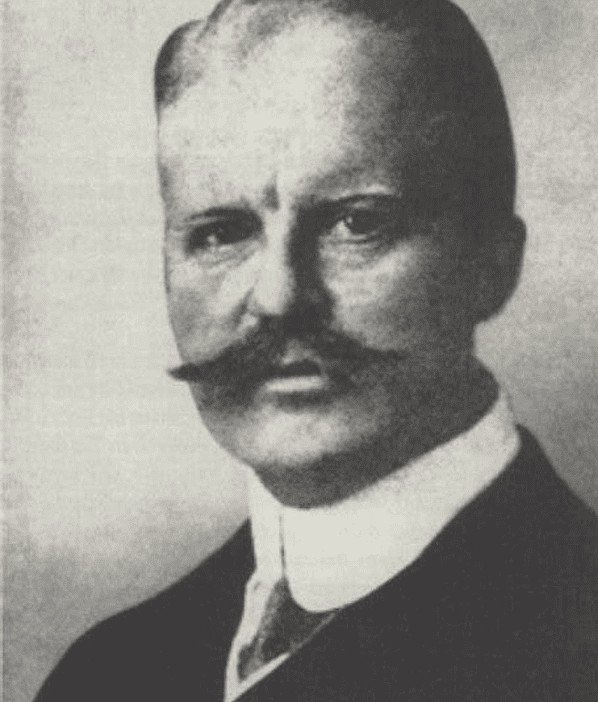
German Foreign Secretary, Arthur Zimmermann
Despite the difficulty, the talented cryptographers in Room 40 The Admiralty, led by Nigel de Grey and William Montgomery, managed to decipher the message.
The contents of the telegram were shocking. Zimmermann proposed that in the event of the United States entering the war, Mexico should align with Germany. In return, Germany would support Mexico in retaking territories it had lost to the United States in previous conflicts, specifically Texas, New Mexico, and Arizona.
Understanding the gravity of the information, the British faced a delicate task. They needed to inform the United States about Germany’s plans without revealing that they had cracked the German codes or that they were intercepting neutral diplomatic traffic (since the telegram was sent via the US diplomatic cable).
To overcome this challenge, the British devised a clever plan. They obtained a copy of the telegram from a different source, a commercial telegraph line in Mexico, making it appear as if they had intercepted the message in Mexico rather than decoding it in London. This way, they could share the information with the United States without revealing their codebreaking capabilities.

Zimmerman Telegram decoded by the British codebreakers
In February 1917, the British shared the contents of the Zimmermann Telegram with the U.S. government. Initially met with disbelief, the message’s authenticity was confirmed when Zimmermann himself admitted to it in March.
The revelation caused a major shift in public opinion in the U.S., contributing significantly to the country’s decision to enter the war on the side of the Allies in April 1917.
Thus, the decryption of the Zimmermann Telegram by the codebreakers in Room 40 The Admiralty played a significant role in the geopolitical landscape of the First World War, effectively drawing the United States into the conflict and marking a turning point in the war.
Room 40 The Admiralty: An In-depth Look at Its Operations
Room 40 the Admiralty, within the Old Admiralty Building in London, functioned as the beating heart of British naval intelligence during the First World War. While its operations might have been shrouded in secrecy, their impact was far-reaching. The British Foreign Office played a crucial role in Room 40’s intelligence efforts, particularly in intercepting and deciphering the Zimmermann Telegram, which proposed a military alliance between Germany and Mexico. This section aims to take a closer look at the day-to-day workings of Room 40 the Admiralty, their methods, and the key figures who led this cryptographic endeavour.
Please view our other informative articles on personal and cyber security
The Environment
Room 40 The Admiralty was far from your typical wartime setup. Its environment more closely resembled an academic setting than a military unit. Here, naval officers worked alongside university professors, language experts, mathematicians, and amateur cryptanalysts, pooling their collective intellect to break complex German codes.
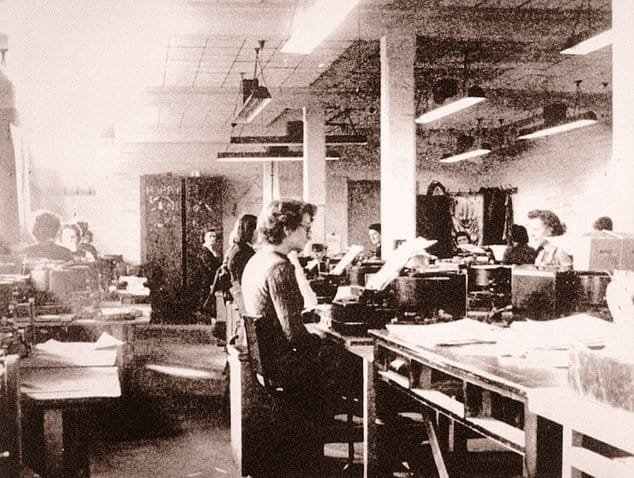
Room 40 The Admiralty Circa 1914
The room was often filled with the rustling of papers, hushed discussions, and the occasional ringing of telephones, conveying urgent decoded messages.
The Signals Intelligence and Code-breaking Process
The process of codebreaking within Room 40 The Admiralty was laborious and mentally taxing. A typical task would begin with intercept operators receiving encrypted German transmissions, which were then passed onto Room 40 The Admiralty. Codebooks, linguistic knowledge, mathematical analysis, and pattern recognition were all employed to break the codes. It was a race against time as the team tried to provide actionable intelligence while the information was still relevant.
Technologies and Techniques
The work in Room 40 The Admiralty was predominantly manual, employing pencil-and-paper methods. They did, however, use some mechanical aids, such as card indexes for cataloguing intercepted messages and code elements. The codebreakers also used large sheets of paper known as Z-cards to manually compare and analyse different messages encrypted with the same code, looking for patterns and repetitions.
Operations
Room 40’s operations, though cloaked in the utmost secrecy, were instrumental in shaping the course of the First World War. Its dedicated staff, using a blend of manual techniques and nascent technology, delivered intelligence that would prove to be a game-changer in the murky waters of wartime naval strategy. While many individuals contributed to Room 40’s efforts, some notable figures include:
Captain Reginald ‘Blinker’ Hall: As Director of Naval Intelligence, Hall played a critical role in managing the intelligence produced by Room 40 The Admiralty and interpreting its strategic implications.
Alastair Denniston: A language teacher and classicist, Denniston would later head the Government Code and Cypher School. He was instrumental in solving some of the more complex German codes.
Nigel de Grey and William Montgomery: Both de Grey and Montgomery were pivotal in the decryption of the Zimmermann Telegram, one of Room 40’s most significant achievements.
Room 40’s codebreaking efforts had a significant impact on naval warfare during the First World War, particularly in identifying the locations of German submarines and Allied ships.
Their ability to decode German communications provided the British Royal Navy with a significant strategic advantage, allowing them to anticipate and counter German ships’ operations effectively.
Room 40’s traffic analysis enabled the identification and tracking of German submarines, providing critical intelligence to understand naval dispositions in real-time.
Early Warnings and Countermeasures
One of the critical contributions of Room 40 The Admiralty was providing early warnings about German naval movements. By decoding the German naval codes, Room 40 could alert the Royal Navy about potential U-boat attacks and surface raiders, allowing them to reroute vulnerable convoys or prepare countermeasures. This significantly reduced the effectiveness of German naval operations and mitigated the potential losses to the British merchant fleet.
Battle of Jutland
A prime example of the strategic advantage Room 40 The Admiralty provided was during the Battle of Jutland in 1916, the war’s most significant naval battle. Room 40 had deciphered messages detailing the German High Seas Fleet’s plan to sail into the North Sea to engage the British Grand Fleet.
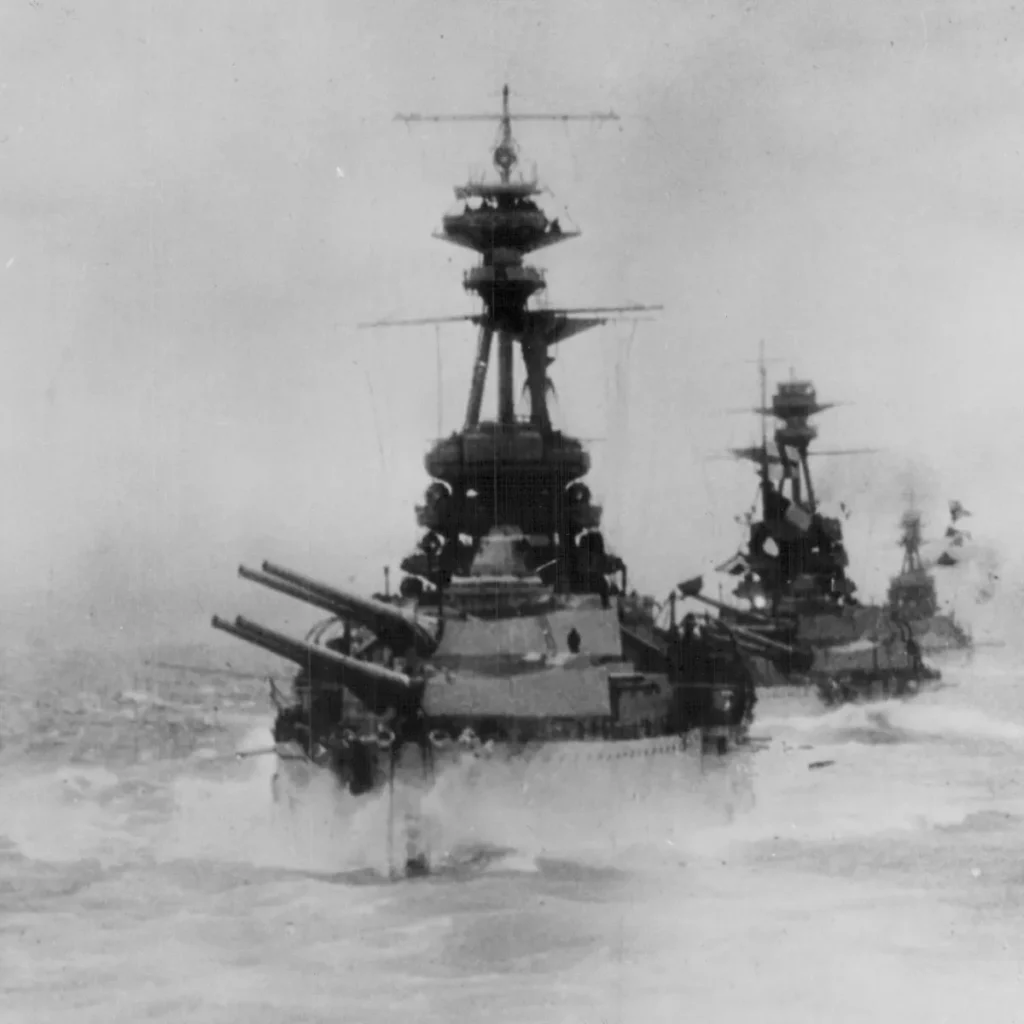
Battle of Jutland 1917 – The only significant naval battle of WW1
Armed with this knowledge, the British navy had the opportunity to prepare and attempt to trap the German fleet. Although the battle did not yield a decisive victory for either side, the intelligence provided by Room 40 The Admiralty gave the British a significant advantage, contributing to the German fleet’s later decision to avoid large-scale engagements.
Blockade of Germany
Information from Room 40 The Admiralty also facilitated the effective implementation of the British blockade of Germany, a key element in the Allied strategy. Knowledge of German shipping routes, gathered through decoded messages, allowed the British navy to intercept and stop ships suspected of carrying goods to Germany, strengthening the effectiveness of the blockade.
Decoding the Zimmermann Telegram
As mentioned in the previous section, Room 40 The Admiralty played a pivotal role in decoding the Zimmermann Telegram, which contributed to the United States entering the war on the side of the Allies. The entry of the U.S. not only brought additional naval assets but also significantly boosted the morale and resources of the Allied forces.
The work of Room 40 The Admiralty had wide-reaching effects on the conduct of naval warfare during the First World War. Through their tireless efforts, they provided the British navy with a crucial edge that influenced key battles and strategic decisions, ultimately contributing to the eventual Allied victory.
Challenges and Controversies
Internal Conflicts and Resource Limitations
Room 40, despite its groundbreaking achievements, was not without its share of internal conflicts and resource limitations. One of the primary challenges was the chronic shortage of financial resources and skilled personnel. The team, though highly dedicated, was relatively small and had to work tirelessly to intercept and decode German communications. The complexity of the German ciphers presented significant technological and mathematical challenges, often stretching the team’s capabilities to their limits.
The lack of coordination within the British Admiralty further compounded these issues. The Admiralty’s insistence that all decoded information be analyzed solely by naval specialists limited the effectiveness of Room 40’s operations. This bureaucratic hurdle meant that while Room 40’s cryptanalysts could decrypt the messages, they were not permitted to interpret the information themselves, leading to potential delays and miscommunications.
Internal conflicts also plagued Room 40, particularly involving Captain Reginald ‘Blinker’ Hall, the head of Room 40. Hall’s unconventional methods and his willingness to take significant risks often put him at odds with other officials within the Admiralty. His leadership style, while visionary, sometimes clashed with the more conservative elements of the British naval command. Despite these challenges, Hall’s determination and strategic insight were crucial to the success of Room 40, demonstrating the delicate balance between innovation and traditional military protocols.
Ethical Dilemmas in Intelligence Gathering
The operations of Room 40 also raised profound ethical dilemmas in the realm of intelligence gathering. The primary objective of intercepting and decoding German communications often involved handling highly sensitive and confidential information. This posed a significant ethical challenge for the British government, which had to balance the need for critical intelligence with the risk of compromising diplomatic relationships and revealing sensitive information.
One of the most notable ethical dilemmas faced by Room 40 was the decision to share the decoded Zimmermann Telegram with the United States. The contents of the telegram were explosive, revealing Germany’s proposal for a military alliance with Mexico against the United States. The British government was initially hesitant to disclose that they had intercepted and decoded the message, fearing it would expose their codebreaking capabilities and methods. However, the potential consequences of not sharing this information with the US were too significant to ignore. Ultimately, the British government decided to release the decoded telegram to President Wilson, a decision that played a pivotal role in bringing the United States into the war.
The success of Room 40’s operations also prompted broader questions about the morality of intelligence gathering. The use of codebreaking and signals intelligence to gain an advantage over the enemy was a relatively new and untested concept at the time. The British government had to navigate the ethical implications of these methods, considering the potential consequences of their actions on both the war effort and future diplomatic relations.
In conclusion, Room 40 faced significant challenges and controversies during its operation. Despite these hurdles, the organization played a crucial role in the Allied victory in World War I. Its legacy continues to shape the field of intelligence gathering today, highlighting the enduring importance of ethical considerations in the pursuit of national security.
Beyond the War: The Legacy of Room 40
The role and impact of Room 40 The Admiralty extended well beyond the cessation of hostilities in the First World War. It laid the foundation for subsequent advancements in cryptanalysis, intelligence work, and set the stage for similar operations in the Second World War. Moreover, the legacy of Room 40 continues to echo in today’s digital age where cryptography and cyber-security play an ever-growing role.
Disbandment and Transition
With the end of the First World War in 1918, the immediate need for a unit like Room 40 diminished. Consequently, the Admiralty officially disbanded Room 40 in 1919. However, the importance of codebreaking had been firmly established, and a part of its staff, along with its functions, was absorbed into the Government Code and Cypher School (GC&CS) in 1919.
GC&CS itself would later evolve into the now well-known Government Communications Headquarters (GCHQ), the UK’s primary signals intelligence organisation.
Influence on World War II Codebreaking Operations
The work of Room 40 The Admiralty significantly influenced codebreaking operations during World War II. Many former Room 40 personnel, including Alastair Denniston, played critical roles in establishing and leading the operations at Bletchley Park, the centre of British cryptanalysis during the Second World War.
The techniques and methods developed in Room 40 The Admiralty served as a foundation upon which more advanced codebreaking operations were built, culminating in the breaking of the infamous German Enigma codes.
Contributions to Modern Cryptanalysis
Room 40 was among the first organised efforts to systematically break complex military codes on a large scale. Its pioneering work in cryptanalysis has had a lasting impact on both military intelligence and broader fields like computer science and cybersecurity.
Concepts and techniques employed by Room 40 The Admiralty can be seen in modern cryptographic practices, underlining its lasting legacy in the field.
Lessons in Intelligence and Secrecy
Room 40 The Admiralty also taught valuable lessons in intelligence work, particularly the importance of maintaining secrecy about codebreaking capabilities. The way the British managed to use intelligence from the Zimmermann Telegram, without revealing their codebreaking abilities, is a classic example of intelligence work, informing modern practices.
Room 40 The Amiralty may have been a product of the First World War, but its influence resonates well into the 21st century. Its legacy is seen in everything from the development of modern cryptanalysis to the intelligence practices of today’s digital world. The story of Room 40 is a testament to the enduring power of cryptography and a reminder of its crucial role in the realm of security and defence.
Key Figures
Many distinguished individuals were involved in the operations of Room 40 The Admiralty, contributing their skills and expertise to the war effort. Their work played a pivotal role in the British Royal Navy’s understanding and countering of German naval operations. Here, we take a closer look at some of the key figures who were instrumental in the success of Room 40.
Alfred Ewing (Director of Naval Education)
Sir James Alfred Ewing, a Scottish physicist and engineer, was instrumental in establishing Room 40. In 1914, as Director of Naval Education, he was given the responsibility of setting up a codebreaking unit. Ewing recruited a team of talented cryptographers, which eventually grew into Room 40 The Admiralty.
Captain Reginald ‘Blinker’ Hall (Director of Naval Intelligence)
Captain Reginald Hall, commonly known as ‘Blinker’ Hall due to his constant blinking, was the Director of Naval Intelligence from 1914 to 1919. He was pivotal in managing the intelligence produced by Room 40 and was known for his ability to make shrewd and quick decisions based on the decrypted messages. Hall was instrumental in the strategic use of the decoded Zimmermann Telegram.
Alastair Denniston (Head of the Government Code and Cypher School)
Alastair Denniston was a former teacher who brought a deep understanding of languages to his work in Room 40. After the First World War, he played a significant role in transitioning Room 40 into the Government Code and Cypher School (GC&CS), and he would later head the GC&CS operations at Bletchley Park during the Second World War.
Nigel de Grey and William Montgomery (Codebreakers)
Nigel de Grey and William Montgomery were two of the most talented cryptographers working in Room 40 The Admiralty. Together, they were instrumental in decrypting the Zimmermann Telegram, one of Room 40’s most significant achievements. De Grey would later continue his work in codebreaking during the Second World War at Bletchley Park.
Dilly Knox (Codebreaker)
Dillwyn “Dilly” Knox was another key member of the Room 40 The Admiralty team. He was known for his unique and innovative code-breaking methods and was instrumental in cracking several complex German ciphers. Knox also went on to work at Bletchley Park during World War II.
Sir Hugh Sinclair (Director of Naval Intelligence)
Sir Hugh Sinclair took over as Director of Naval Intelligence after Hall. He recognized the strategic importance of signals intelligence and was instrumental in the transition of Room 40 The Admiralty into the Government Code and Cypher School, which would continue Britain’s cryptographic efforts into World War II.
These individuals, along with many others, made significant contributions to the success of Room 40. Their dedication and expertise not only helped Britain during the war but also laid the groundwork for future advancements in cryptanalysis and intelligence work.
Conclusion
In reflecting upon the story of Room 40 The Admiralty, it’s clear that the unit’s operations during the First World War have had a profound and lasting impact on the course of history. Positioned within a seemingly nondescript room in the Old Admiralty Building in London, this dedicated group of naval officers, academics, and language experts quietly shaped the dynamics of the war, affecting not only its immediate outcomes but also influencing future conflicts and advancements in the field of cryptography.
Through tireless efforts, the team at Room 40 unravelled the complexities of German naval ciphers, providing crucial intelligence to the British Admiralty. Their work significantly impacted the conduct of naval warfare, from providing early warnings and countermeasures to their instrumental role in significant events like the Battle of Jutland and the effective implementation of the British blockade of Germany.
Possibly the most critical contribution of Room 40 The Admiralty was the decryption of the Zimmermann Telegram, an event that eventually led to the United States entering the war. This achievement underscores the strategic importance of cryptanalysis and intelligence, showcasing how, beyond the obvious battlefield, wars can be influenced, if not defined, by the covert efforts of cryptographers.
Room 40’s legacy extended well beyond the war years. Its transition into the Government Code and Cypher School and the influence it had on Bletchley Park during World War II indicate the unit’s long-term significance. Moreover, its pioneering work in cryptanalysis continues to inform contemporary practices in the fields of computer science and cybersecurity, while its lessons in intelligence operations provide valuable insights for today’s digital world.
Ultimately, the story of Room 40 The Admiralty serves as a potent reminder of the silent heroes of warfare. Their critical work, largely unseen and unsung, continues to ripple through history. In our modern era, where cybersecurity and digital intelligence form the frontline of defence and security, the lessons from Room 40 are more relevant than ever before, urging us to appreciate the invisible soldiers within our midst, working tirelessly behind the scenes to safeguard nations.
FAQ
What did Room 40 do?
Room 40 The Admiralty was a highly secretive British naval intelligence unit during World War I, primarily focused on code-breaking and deciphering intercepted German communications. Established in October 1914, it was named after the room in the Admiralty building in London where the unit was initially housed.
What does the Admiralty do in 1914-1918?
During the period of 1914-1918, the Admiralty was responsible for overseeing the operations and management of the naval forces of the United Kingdom. It played a crucial role in coordinating naval strategies, organising naval fleets, and ensuring the defense and security of the British Empire during World War I.
What took place in London’s Room 40?
Room 40 The Admiralty was a British codebreaking unit during World War I. It intercepted and decrypted enemy communications, providing valuable intelligence to the British forces.
Where is Room 40 the Admiralty?
Room 40 The Admiralty, as it was known during World War I, was located in the Old Building of the Admiralty, the headquarters of the Royal Navy, in London, England. The Admiralty was situated on Whitehall, a main thoroughfare in central London, not far from the Houses of Parliament and Downing Street.
What did codebreakers in Britains crack room do in WW1
Codebreakers in Britain’s “Crack Room” during World War 1 played a crucial role in deciphering enemy codes and intercepting secret messages. They worked on decrypting intercepted telegrams and messages using various techniques, including codebreaking, cryptography, and intelligence analysis. Their work helped gather valuable information about the enemy’s plans, troop movements, and other critical intelligence, which greatly contributed to the Allied war effort.
What was the purpose of cryptanalysis during world war one
Cryptanalysis during World War One had the purpose of deciphering encrypted messages sent by enemy forces in order to gain valuable intelligence and military advantage.
What was the main job of the British officers who worked in Room 40 The Admiralty?
The main job of the British officers who worked in Room 40 during World War I was cryptanalysis, specifically focused on intercepting, deciphering, and analysing encrypted German naval communications. Their responsibilities included: intercepting communications, code and cipher breaking, translation and analysis, intelligence reporting, developing and improving cryptanalytic techniques. This is also include maintaining secrecy, as an essential aspect of their work was to maintain the utmost secrecy about their activities. The effectiveness of Room 40 depended heavily on the Germans not knowing that their codes had been broken.
What is the old Admiralty building used for now?
the Old Admiralty Building, located on Whitehall in London, had undergone a transition from its historical role as the headquarters of the Royal Navy. The building, known for its architectural and historical significance, including its association with Room 40 The Admiralty and other naval operations, has been repurposed for various government functions over the years. Efforts have been made to preserve the historical aspects of the building, given its significance in British naval history and its architectural value.
What was Room 40 in the British Admiralty building in London?
Room 40 The Admiralty was the cryptanalysis department located in the British Admiralty building in London during World War I.
Yes, the capture of German naval codebooks during World War I was extremely important and had a significant impact on the war, particularly for the British cryptanalysis efforts in Room 40 The Admiralty.
What was Signals Interception in WW1
Signals interception and direction finding were crucial aspects of electronic warfare and intelligence gathering during World War I, representing a significant technological advancement in military strategy.
– Room 40 The Admiralty.
These websites should provide a solid foundation of factual information and historical context.
National Archives (UK) – www.nationalarchives.gov.uk
The National Archives of the United Kingdom is a treasure trove of historical documents and records. Their website often contains detailed articles, original documents, and educational resources about British military and naval history, including aspects of intelligence and code-breaking during World War I.
Imperial War Museums – www.iwm.org.uk
The Imperial War Museums cover a wide range of topics related to British and Commonwealth involvement in conflicts. Their website provides articles, collections, and stories that can offer insights into Room 40, its operations, and its impact on the war.
BBC History – www.bbc.co.uk/history
BBC History offers a range of articles written by historians and experts. They often feature pieces on military history, including World War I, with accessible and engaging content that can provide context and background for Room 40.
Crypto Museum – www.cryptomuseum.com
The Crypto Museum is dedicated to the history of cryptography and espionage. Their website includes detailed information on various aspects of historical code-breaking, including technologies and methods used during World War I, which would be relevant for understanding Room 40’s work.
First World War.com – www.firstworldwar.com
This is a comprehensive resource for World War I history, offering detailed articles, biographies, timelines, and primary documents. The site can provide broader context about the war, which is essential for understanding the strategic significance of intelligence work like that of Room 40.
References
Beesly, P. (1982). Room 40: British Naval Intelligence 1914-18. London: Hamish Hamilton.
Kahn, D. (1991). The Codebreakers: The Comprehensive History of Secret Communication from Ancient Times to the Internet. New York: Scribner.
Massie, R. K. (2003). Castles of Steel: Britain, Germany, and the Winning of the Great War at Sea. New York: Random House.
Smith, M. (2010). The Secret History of Room 40: The Birthplace of Modern Codebreaking. London: Biteback Publishing.
Tuchman, B. W. (2014). The Zimmermann Telegram: The Astounding Espionage Operation That Propelled America into the First World War. New York: Random House.
West, N. (1986). GCHQ: The Secret Wireless War, 1900-86. London: Weidenfeld & Nicolson.
Yardley, H. O. (2004). The American Black Chamber. Annapolis: Naval Institute Press.
The National Archives, UK. Various documents related to Room 40, [online] Available at: <www.nationalarchives.gov.uk>
With over three decades of experience in the heart of London’s financial sector, I have dedicated my career to the pursuit of robust cybersecurity practices and IT leadership. As a Certified Information Systems Security Professional (CISSP), Certified Information Security Manager (CISM), Certified Chief Information Security Officer (C|CISO), Certified Ethical Hacker (CEH), and Computer Hacking Forensic Investigator (CHFI), I bring a wealth of knowledge and expertise to the table.
My journey in the field of cybersecurity has not only been about personal growth but also about sharing my insights with others. As an international speaker, I have had the privilege of addressing audiences worldwide, discussing the importance of cybersecurity in today’s digital age. My passion for knowledge sharing extends to my work as an author and blogger, where I delve into the complexities of cybersecurity, offering practical advice and thought leadership.
In my role as a CISO and Head of IT, I have overseen the development and implementation of comprehensive information security and IT strategies. My focus has always been on creating resilient systems capable of withstanding the evolving landscape of cyber threats.
My Master’s degree in Cybersecurity has provided a solid academic foundation, which, when combined with my practical experience, allows me to approach cybersecurity from a holistic perspective.
I am always open to connecting with other professionals in the field, sharing knowledge, and exploring new opportunities. Let’s secure the digital world together.

